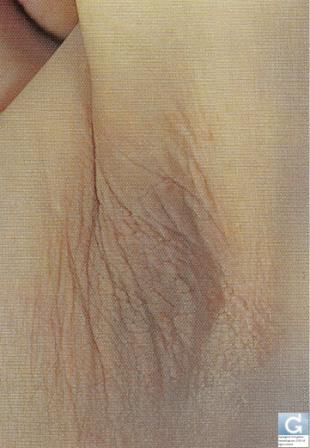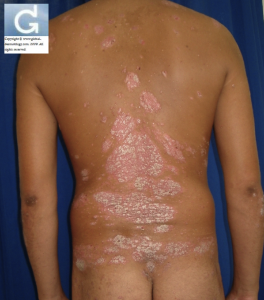Metabolic Syndrome and the Skin (For Professionals)
Metabolic Syndrome and the Skin (For Professionals)
- Metabolic syndrome is also known as metabolic syndrome X, cardiometabolic syndrome, syndrome X, insulin resistance syndrome, Reaven’s syndrome (named for Gerald Reaven), and CHAOS (in Australia).
- It affects 24% of the adults in the US, with the highest prevalence being in individuals 60 through 69 years of age (44%).
- Simply put, metabolic syndrome is a medical disorder resulting from insulin resistance. Insulin resistance happens when your fat storage do not respond to insulin well. This results in impaired conversion from stored carbohydrates as fat into energy.
- Individuals with metabolic syndrome are at increased risk of cardiovascular disease, diabetes and premature death.
So, how do you know that you have metabolic syndrome?
- There are a lot of criteria defining metabolic syndrome from health governing bodes all over the world (World Health Organisation…) but basically it means that you have elevated fasting blood sugar levels or impaired glucose tolerance when tested with the 2 hour-oral glucose tolerance test, or any other blood sugar evaluations; this fits into the definition of type 2 diabetes mellitus. In addition to this the following are also found:
- high blood pressure
- large amount of fat around the waist or visceral, male-pattern or apple-shaped adiposity
- increased levels of triglycerides
- low levels of high-density lipoprotein (HDL) cholesterol (“good cholesterol”)
- high levels of uric acid in blood
- fatty liver
- polycystic ovarian syndrome
- Pseudoacanthosis Nigricans (Clinically comparable to Acanthosis Nigricans). If this is present, the dermatologist will be able to diagnose this syndrome based on appropriate blood tests following skin examination.
- Let us focus more on the skin manifestations of metabolic syndrome.
- Pseudoacanthosis Nigricans is hyperpigmentation of the skin is accompanied by thickening. PN is a disorder which causes velvet-like, light-brown-to-black, markings usually on the neck, under the arms or in the groin.
Pseudoacanthosis Nigricans (clinically comparable with Acanthosis Nigricans)
- Psoriasis and metabolic syndrome are linked as psoriasis is associated with risk factors for the metabolic syndrome:
- type 2 diabetes
- dyslipidemia
- hypertension
- obesity.
Psoriasis (plaque type)
- So why does this occur? Again, this skin disorder is due to insulin resistance. You develop insulin resistance when you eat too much of starches and sugars. This will ultimately result in elevated insulin levels. The elevated insulin levels in the body activate insulin receptors in the skin, forcing it to grow abnormally. This is why reducing the circulating insulin by dieting or medication can lead to improvement of the skin problem.
So, what must be done if you have metabolic syndrome and its associated skin disorder?
- You must remember that metabolic syndrome is composed of many illnesses and to cure metabolic syndrome means that you have to cure each and every illness it encompasses.
- What you can do is modify your lifestyle. Do you exercise adequately? Exercise for at least 30 to 60 minutes a day is generally recommended. This includes walking, working out and sports.
- If your BMI (Body Mass Index) says that you are overweight (25-30) or obese (over 30), you should lose weight to reduce insulin levels in your body.
- You should also eat healthy food. You should limit your intake of unhealthy fats and emphasize the intake of fruits, vegetables and whole grains.
- If you are smoking, now is the best time to quit. Smoking increases insulin resistance and also increases your risk of stroke and heart disease.
- You may also need to visit your doctor so that you can be prescribed with medications for cholesterol, hypertension and diabetes if needed. Good blood pressure control is necessary in preventing complications of metabolic syndrome such as heart disease and stroke.
- When acanthosis nigricans develops in people who are not overweight, a medical work-up should be done. Rarely acanthosis nigricans is associated with a malignancy, most commonly of the stomach. In these cases acanthosis nigricans can bee seen in extra places, such as the lips or hands and is commonly unusually severe. Occasionally acanthosis nigricans is congenital or due to a hormonal disorder.




